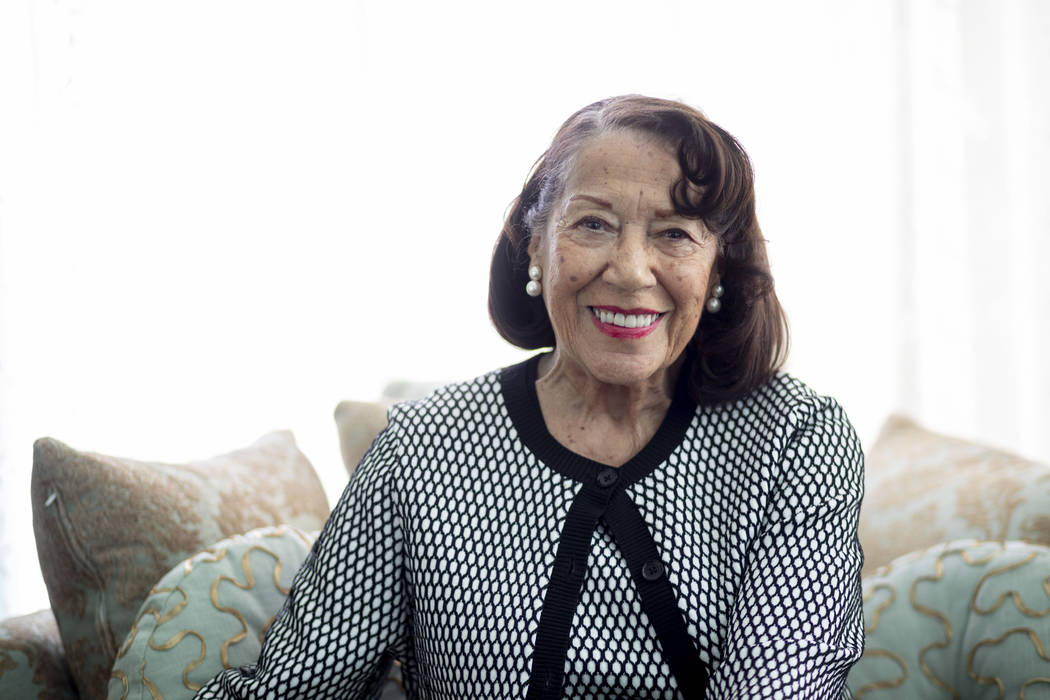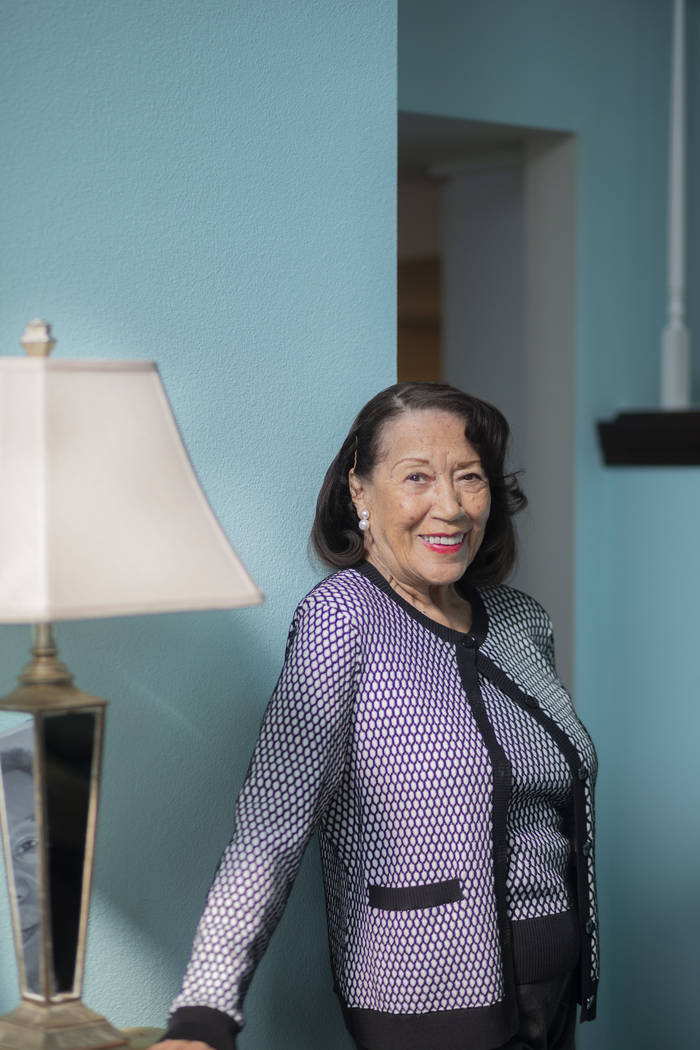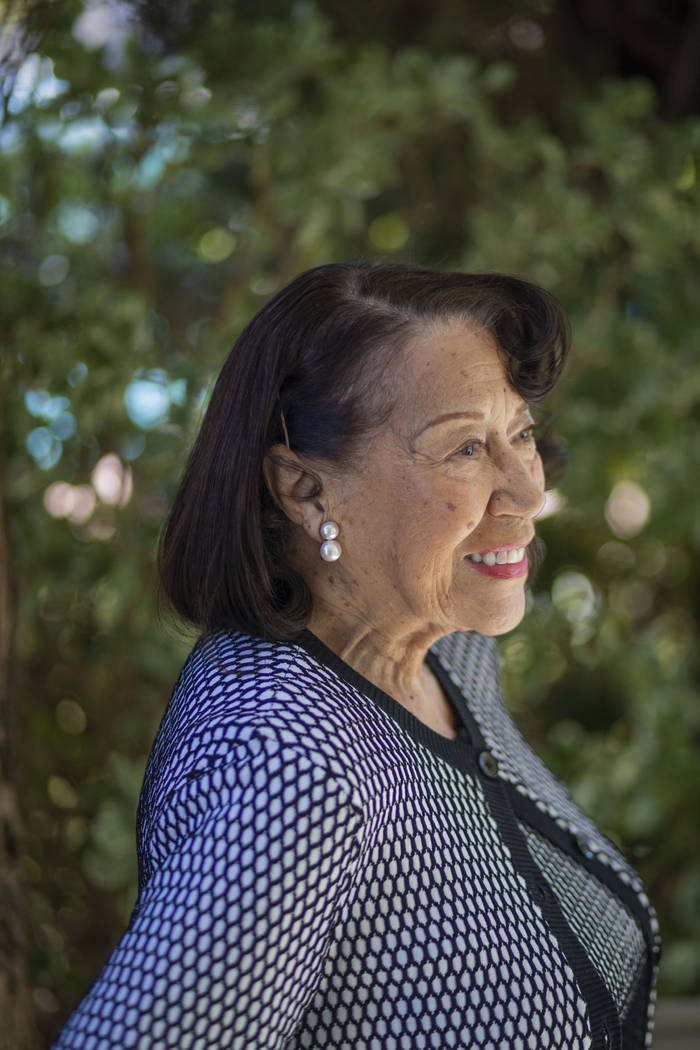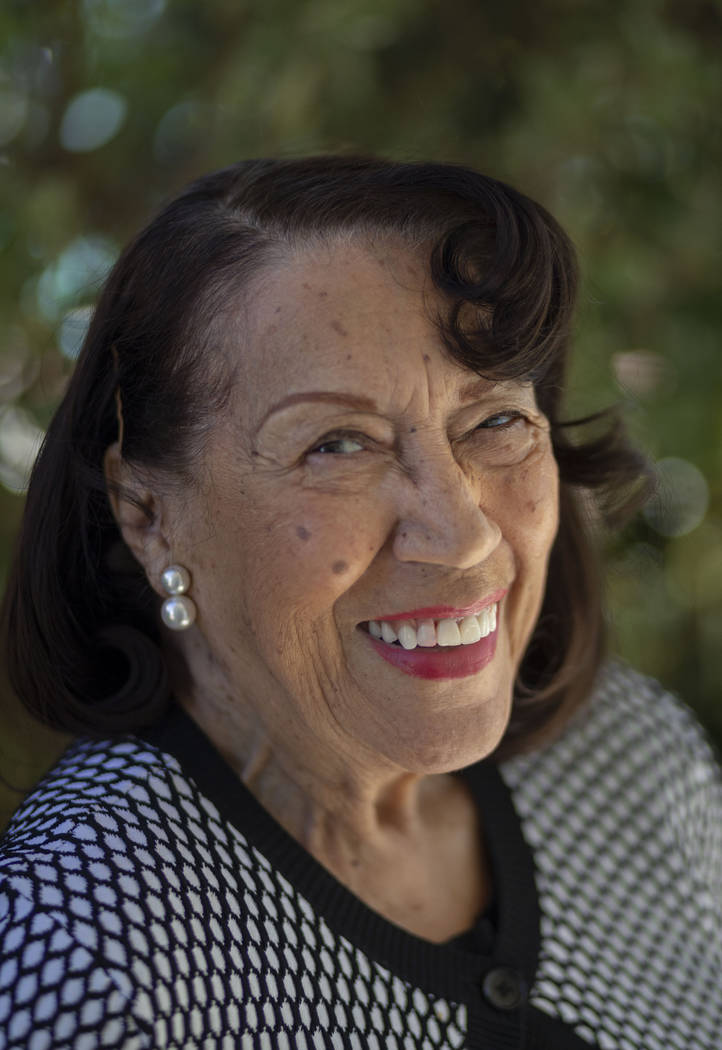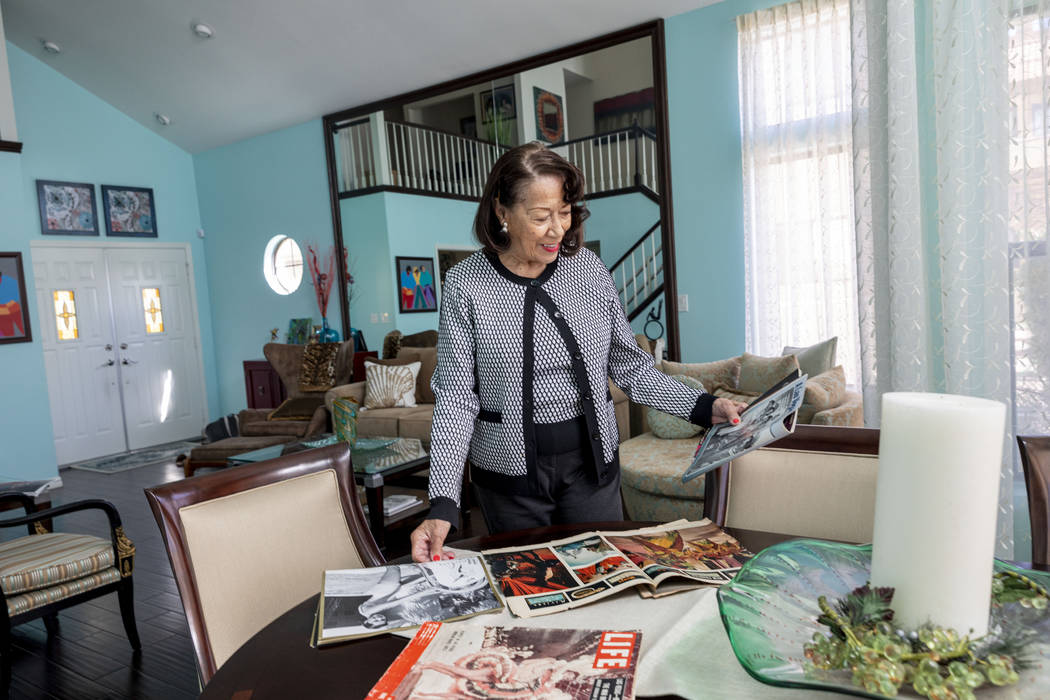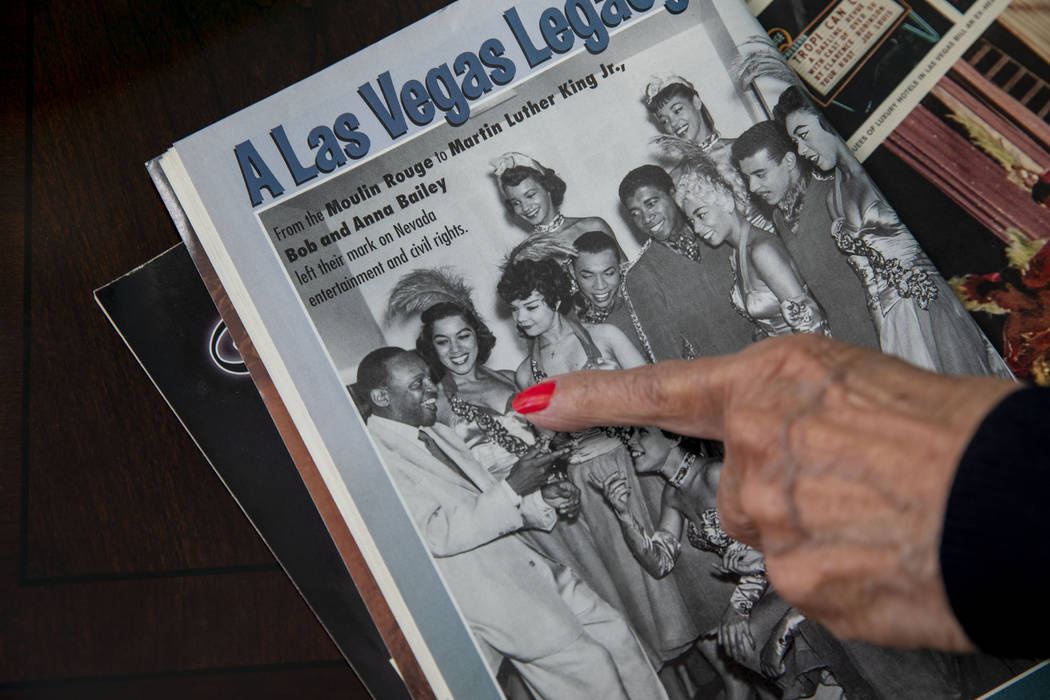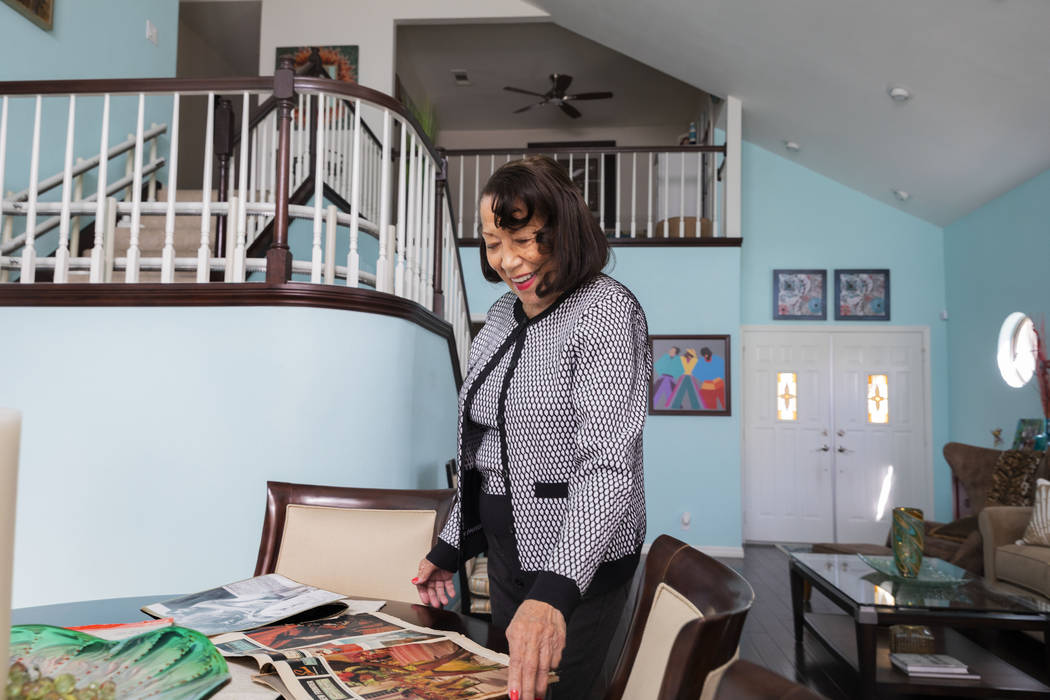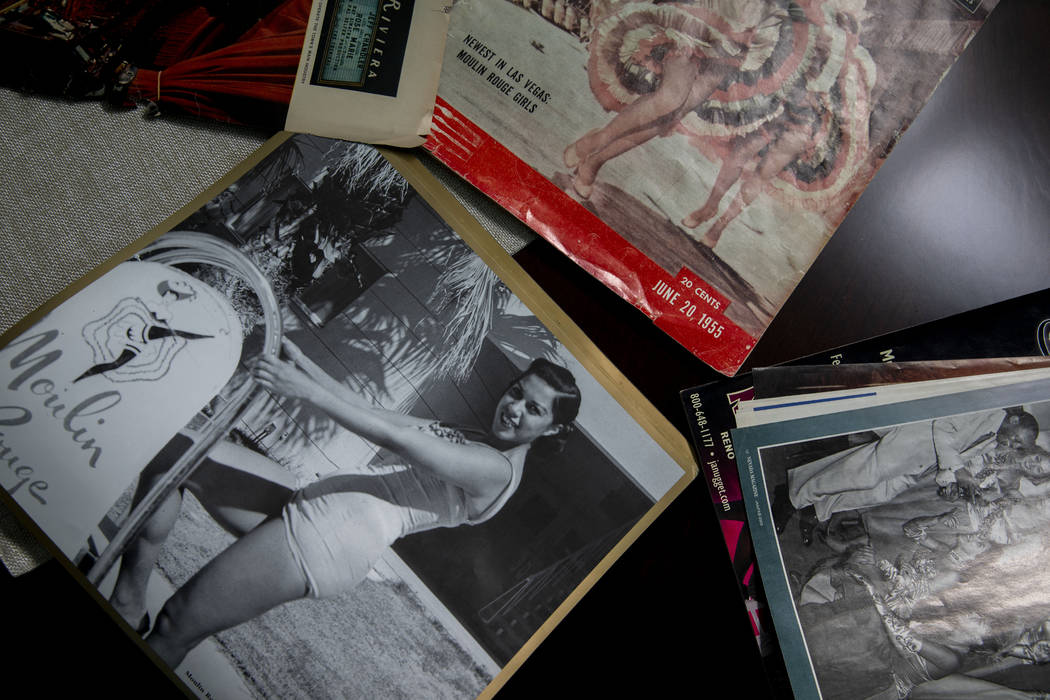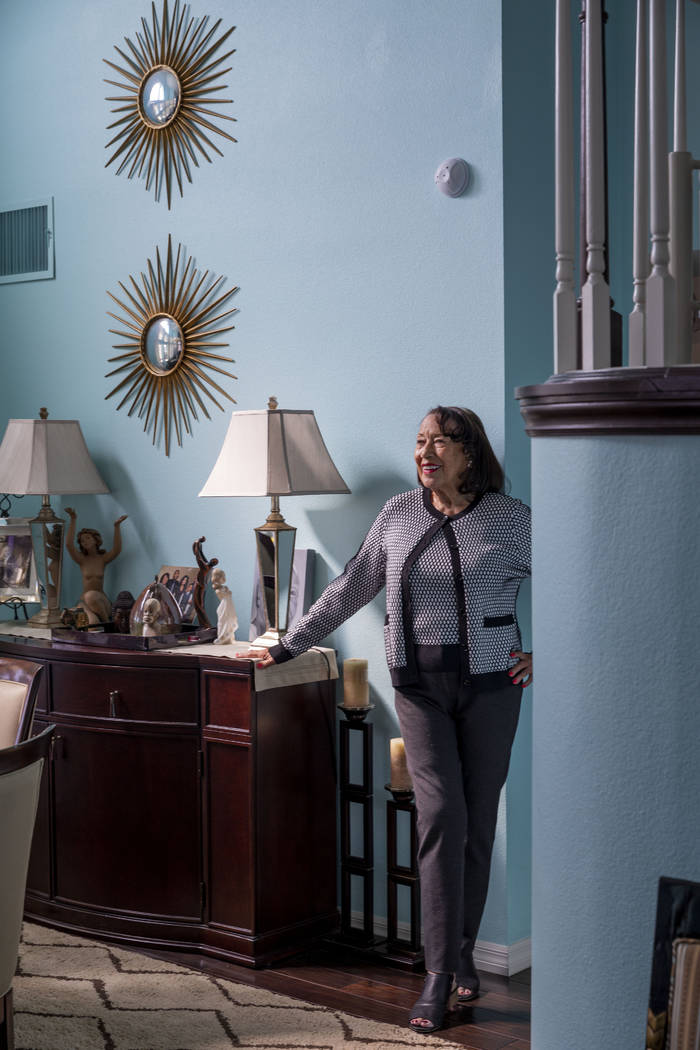Anna Bailey reflects on the Moulin Rouge, integration in Las Vegas
Pearl Bailey, Count Basie, Sammy Davis Jr. — Anna Bailey knew them all. Bailey, now 93, was born in Savannah, Georgia, and moved with her parents to Brooklyn, New York, when she was 6 months old. She started her dancing career in Brooklyn and later danced with Clarence Robinson, who choreographed the legendary film “Stormy Weather.”
And it was dance that brought Bailey to Southern Nevada. She and her husband, William H. “Bob” Bailey, were hired in 1955 for the Moulin Rouge on Bonanza Road, the short-lived hotel-casino that at the time was the only integrated one in Las Vegas. Bob Bailey, who died in 2014, would go on to become the first African American television personality in Las Vegas and a leader in the local equal-rights movement, while Anna Bailey ran the family businesses.
Review-Journal: How did you get started in dancing?
Anna Bailey: I went to the Mary Bruce dance school in Brooklyn when I was 10. (When she was 16 or 17) the dancers at the Apollo in Harlem went on strike. We went in to replace them. That was my first taste of the stage. I knew then that I wanted to be in show business.
What kind of dancing was it?
Tap, swing, a little ballet. We danced on boxes, with ropes, with fans. We did it all, because they expected girls of color to dance really fast and swing.
How did you meet your husband?
I was dancing at the Zanzibar, at 49th and Broadway. He was on Broadway with Count Basie at the Aquarium. He was a vocalist. I saw him at the Roxy Theatre on Broadway. I said, “That’s a good-looking man.” He was 6-foot-1. (Our dance company) went to Cincinnati, and the band came into the hotel there. He got my telephone number there. When he came back to New York, that’s when he called me. He had just graduated from college, so he spoke so well. We got married in New York, at St. Peter Claver Catholic Church in Brooklyn.
When and why did you come to Las Vegas?
In 1955. Pearl Bailey said that was the way to go. Bob knew her from New York. They weren’t related, but they called each other “cuz.” We were so aware of Vegas. We were so excited to get here. (But) we thought (the Moulin Rouge) was on the Strip. We were in the car and we kept riding and riding. It got darker and darker, and then we went under the overpass, and I thought, “What?” But as soon as we pulled up, it was so beautiful.
What was it like working there?
We did three shows a night, at 8, 12 (midnight) and 2:30. The 2:30 show, that was when they emptied out the Strip; everybody came to our show. It was seven nights a week; we got one day off. It was a hard gig. There were 27 girls; I was the only one who was married. We lived in a house behind the Moulin Rouge. Bob was the production singer in the show. His favorite song was “Danny Boy;” he would always end the show with that. It brought the house down. (The audience) was very integrated — every show. It was standing room just every single night. That’s why I don’t understand how it could close in just six months. (There was no warning); we walked up and there was a padlock on the door. I always felt the Strip had something to do with it, because we emptied out the Strip.
How was life here for African Americans at that time?
It was a culture shock, coming from such a diverse place as New York. There were some Fremont Street clothing stores we couldn’t go into. We couldn’t sit at the counter at the Five and 10. We could only sit on the left side of the El Portal theater. (Before the closing) Tallulah Bankhead invited us to her show. The boss called the Rouge and told them to tell us not to come back. We knew Sammy Davis Jr. from New York; he had to stay on the west side of town (when he performed on the Strip). They could be making $20,000 a week and have to go through the kitchen.
When the show closed, we were the only people who stayed. Bob saw the potential here; he saw the opportunities. I didn’t. I wanted to go back to New York. Bob said we were going to stay.
What happened then?
(She continued dancing into her early 40s, at times with Pearl Bailey’s show at the Flamingo and out on tour. Bob also performed with Pearl Bailey.) Blacks and whites sponsored him to go on TV. He was on for 12 years, from the ’60s to the ’70s, on channels 8 and 13. (They had two children, Kimberly Bailey-Tureaud, a local businesswoman, and John, a local attorney, with friends helping with child care.) We worked it out. Being segregated, we were a close community.
Then you went into business?
We opened Sugar Hill, a package store and lounge on the West Side (named for a historic district in Harlem.) Then Bob opened the Golden West Shopping Center at Owens and H Street. Then the Baby Grand package store and lounge, at Sahara and Paradise. We had managers, but I did the books; sometimes I’d have to open up and lock up. We worked real good together. He just starts the businesses and then he’s gone. I ran the businesses.
Where was he?
He was appointed by (then-Gov.) Grant Sawyer to the Equal Rights Commission (serving as chairman; his work is credited with leading to the Nevada Civil Rights Act of 1965). He also went to Culinary (Union), trying to get more African Americans work. He could talk to winos and he could talk to professional people. They named a middle school after him. I try to keep his legacy going. The last thing he said was, “Don’t let them forget me.” I just thought he was perfect, and I really miss him.
Contact Heidi Knapp Rinella at Hrinella@reviewjournal.com or 702-383-0474. Follow @HKRinella on Twitter.



